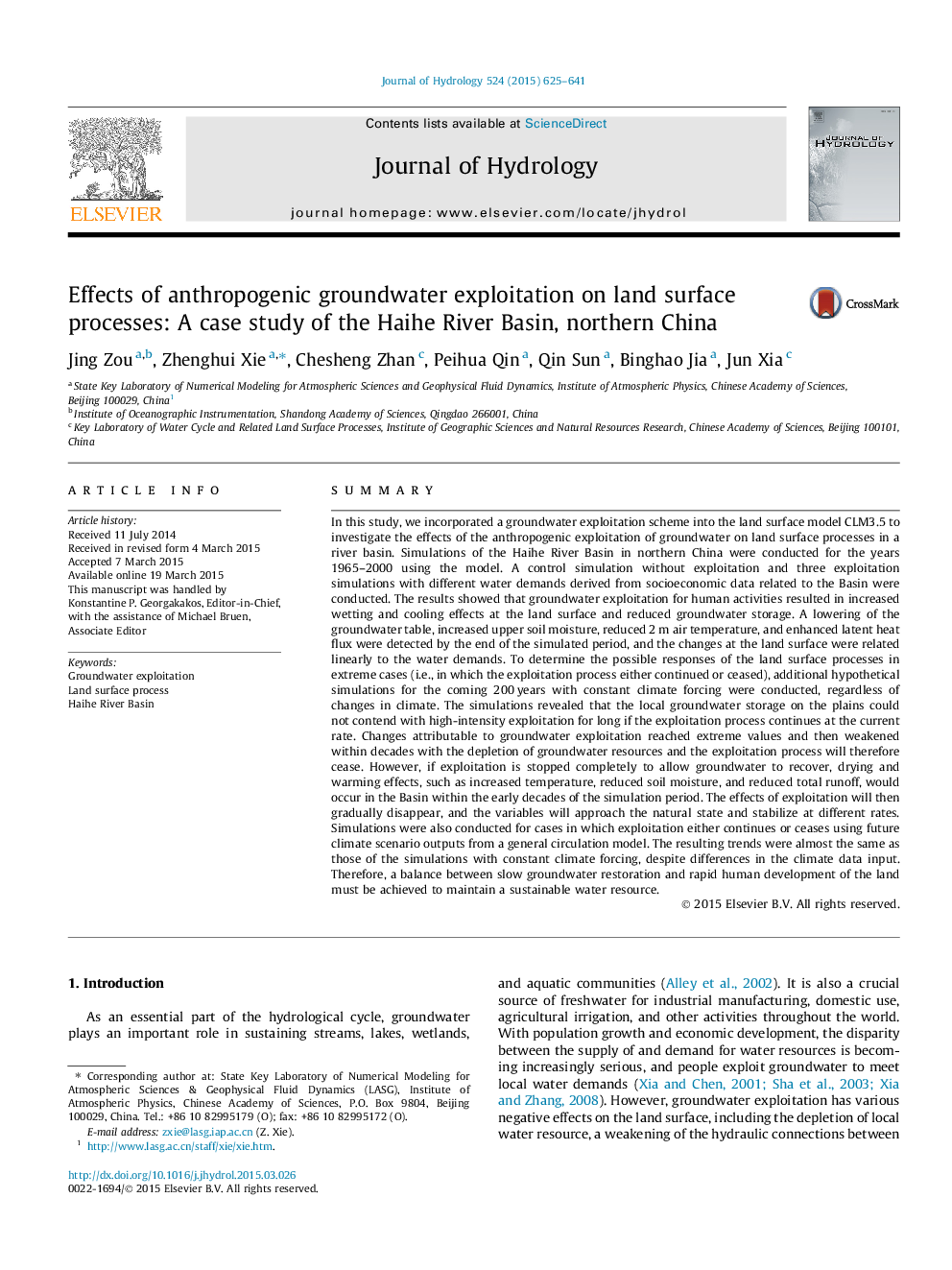| کد مقاله | کد نشریه | سال انتشار | مقاله انگلیسی | نسخه تمام متن |
|---|---|---|---|---|
| 6411483 | 1629926 | 2015 | 17 صفحه PDF | دانلود رایگان |
- A scheme is proposed to simulate the groundwater exploitation and utilization.
- The scheme is incorporated into CLM3.5 and long simulations are conducted.
- Increasingly cooler and wetter effects with water storage reduction are detected.
- The changes in land surface rely on the level of human water demand linearly.
- The groundwater resource is finite and is hard to recover in the future.
SummaryIn this study, we incorporated a groundwater exploitation scheme into the land surface model CLM3.5 to investigate the effects of the anthropogenic exploitation of groundwater on land surface processes in a river basin. Simulations of the Haihe River Basin in northern China were conducted for the years 1965-2000 using the model. A control simulation without exploitation and three exploitation simulations with different water demands derived from socioeconomic data related to the Basin were conducted. The results showed that groundwater exploitation for human activities resulted in increased wetting and cooling effects at the land surface and reduced groundwater storage. A lowering of the groundwater table, increased upper soil moisture, reduced 2Â m air temperature, and enhanced latent heat flux were detected by the end of the simulated period, and the changes at the land surface were related linearly to the water demands. To determine the possible responses of the land surface processes in extreme cases (i.e., in which the exploitation process either continued or ceased), additional hypothetical simulations for the coming 200Â years with constant climate forcing were conducted, regardless of changes in climate. The simulations revealed that the local groundwater storage on the plains could not contend with high-intensity exploitation for long if the exploitation process continues at the current rate. Changes attributable to groundwater exploitation reached extreme values and then weakened within decades with the depletion of groundwater resources and the exploitation process will therefore cease. However, if exploitation is stopped completely to allow groundwater to recover, drying and warming effects, such as increased temperature, reduced soil moisture, and reduced total runoff, would occur in the Basin within the early decades of the simulation period. The effects of exploitation will then gradually disappear, and the variables will approach the natural state and stabilize at different rates. Simulations were also conducted for cases in which exploitation either continues or ceases using future climate scenario outputs from a general circulation model. The resulting trends were almost the same as those of the simulations with constant climate forcing, despite differences in the climate data input. Therefore, a balance between slow groundwater restoration and rapid human development of the land must be achieved to maintain a sustainable water resource.
Journal: Journal of Hydrology - Volume 524, May 2015, Pages 625-641
